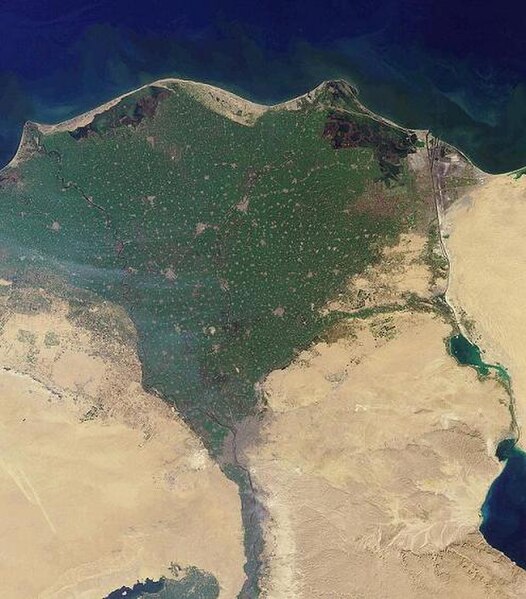River bifurcation occurs when a river flowing in a single channel separates into two or more separate streams which then continue downstream. Some rivers form complex networks of distributaries, typically in their deltas. If the streams eventually merge again or empty into the same body of water, then the bifurcation forms a river island.
Bifurcation in Hövelhof, Germany
River deltas, such as the pictured delta of the Salween River in Myanmar, often show bifurcations. The water flows in from the lower section of the image and passes on both sides of the large island in the center.
A river is a natural flowing watercourse, usually a freshwater stream, flowing on the Earth's land surface or inside caves towards another waterbody at a lower elevation, such as an ocean, sea, bay, lake, wetland, or another river. In some cases, a river flows into the ground or becomes dry at the end of its course without reaching another body of water. Small rivers can be referred to by names such as creek, brook, and rivulet. There are no official definitions for these various generic terms for a watercourse as applied to geographic features, although in some countries or communities, a stream is customarily referred to by one of these names as determined by its size. Many names for small rivers are specific to geographic location; examples are "run" in some parts of the United States, "burn" in Scotland and Northeast England, and "beck" in Northern England. Sometimes a river is defined as being larger than a creek, but not always; in English the language is vague compared to some langauges like French, where a fleuve flows into the sea and a rivière is a tributary of another rivière or fleuve.

Elwha River in the Olympic Peninsula
Melting toe of Athabasca Glacier, Jasper National Park, Alberta, Canada
The Colorado River at Horseshoe Bend, Arizona
Nile River delta, as seen from Earth orbit. The Nile is an example of a wave-dominated delta that has the classic Greek letter delta (Δ) shape after which river deltas were named.






